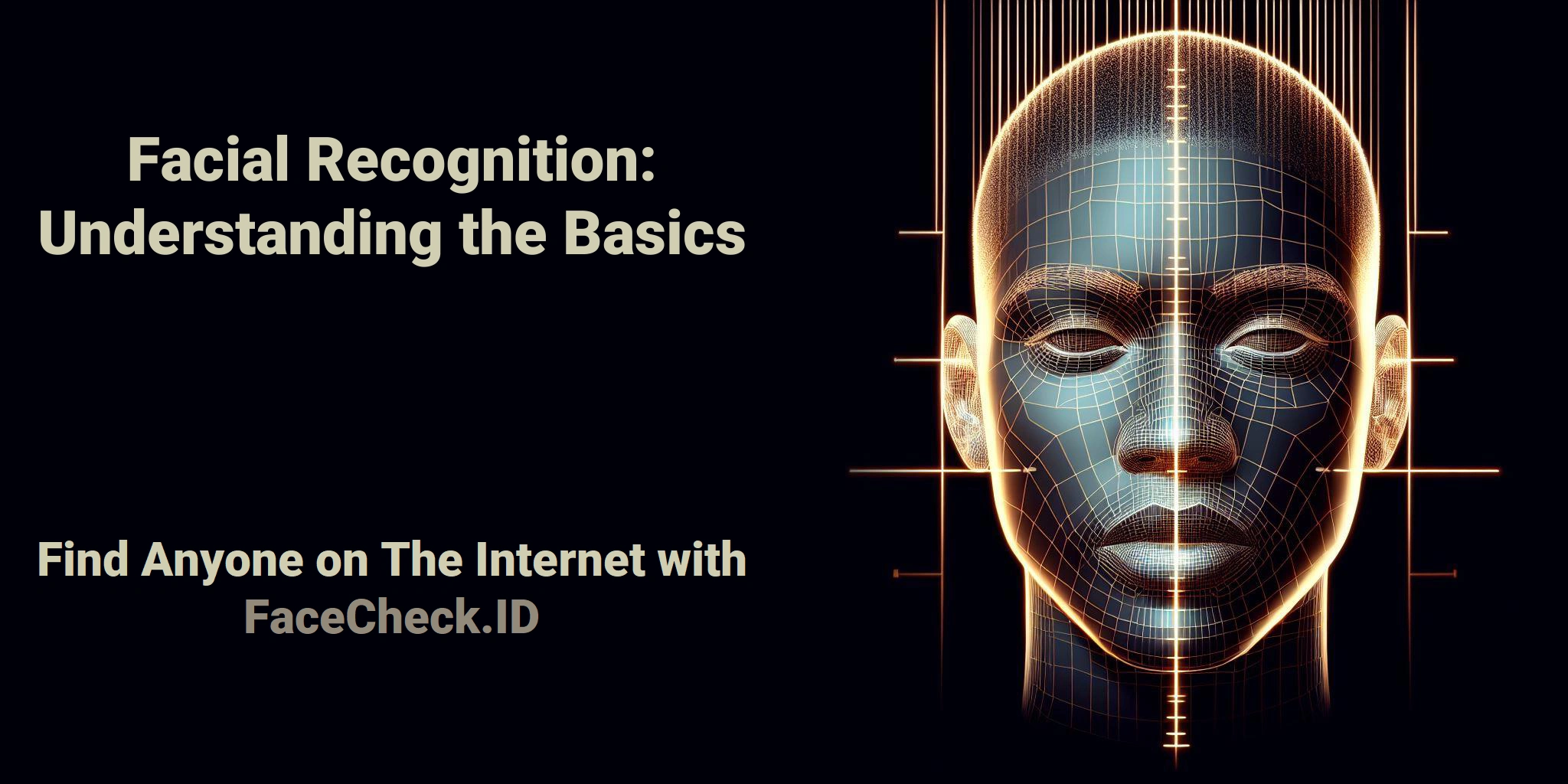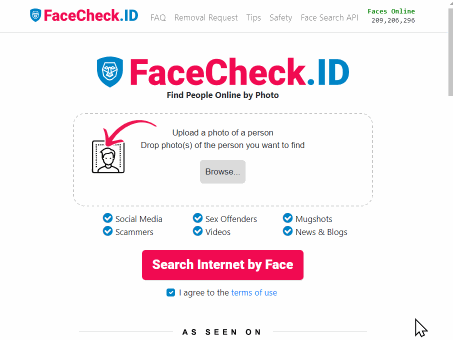Facial Recognition: Understanding the Basics
Facial recognition is becoming more important in our daily lives. To help you understand this technology better, we've compiled the best videos from trusted experts. You'll learn about how facial recognition works on your smartphone, its impact on your privacy, and the new improvements made during the pandemic. This guide is designed to be simple and clear, giving you a straightforward look at how facial recognition is changing the way we live and interact with technology.
In this article, we're going to discuss
- How do I perform a facial recognition search?
- How does facial recognition work?
- Is facial recognition accurate?
- Is facial recognition safe?
- What are the applications of facial recognition technology?
- Is facial recognition racially biased?
- Does the use of facial recognition increase the risk of false arrest?
- Is facial recognition accurate enough for law enforcement use?
- Are there risks in using facial recognition technology for travel?
- Is facial recognition technology used to surveil protestors?
- Will the U.S. government's use of facial recognition lead to a surveillance state like China?
- How can the use of facial recognition by private companies enhance privacy and security?
- What are examples of biometric technology?
- Can facial recognition be fooled by a photo?
- How does facial recognition work on smartphones?
- Does Facial Recognition Affect Consumer Privacy?
- What are the differences between facial recognition and facial characterization?
- What are the benefits of facial recognition technology?
- Use cases of facial recognition systems?
- What is a confidence score in facial recognition?
- Other types of biometric identification technology?
- What is facial attribute detection?
- How has facial recognition adapted to mask-wearing?
- What is liveness detection in facial recognition?
- How is facial recognition technology's accuracy determined?
- What advancements and adaptations in facial recognition technology occurred during the pandemic?
- Understanding Facial Recognition, Applications and Frontrunners
- How to Perform a Facial Recognition Search
How do I perform a facial recognition search?
Using facial recognition is easy
How does facial recognition work?
It involves detection (finding a face in an image), analysis (mapping face geometry and expressions), and recognition (comparing faces to assess a match). The system converts facial data into a unique faceprint, similar to a fingerprint.
Is facial recognition accurate?
Its accuracy is high in controlled settings but varies in real-world conditions. Factors like positioning, lighting, facial feature clarity, and aging impact accuracy.
Is facial recognition safe?
It is one of the safest and most effective biometric methods. Technologies like anonymization and liveness detection enhance its security, reducing the risk of unauthorized access.
What are the applications of facial recognition technology?
Facial recognition technology has a wide range of applications, such as in marketing for delivering personalized advertisements, in law enforcement for identifying suspects and locating missing individuals, and in consumer technology for features like secure device unlocking and user authentication. This versatile technology leverages facial feature analysis to enhance security, personalization, and convenience in different sectors.
Is facial recognition racially biased?
Studies, including a comprehensive one by the National Institute of Standards and Technology (NIST) in 2019, have documented demographic differences in facial recognition accuracy. However, the gap is narrowing with improvements in technology. Algorithms with higher accuracy overall show lower bias, and some show no discernible bias. Crucially, the selection of diverse training data is key to reducing bias.
Does the use of facial recognition increase the risk of false arrest?
There have been a few instances of false arrests based on facial recognition, but these are rare. The technology is mainly used to generate leads, not as the sole basis for arrest. Human error in the investigative process, such as incorrect witness corroboration, plays a significant role in these cases. Improved training and procedures for using facial recognition can mitigate risks of misidentification and false arrest.
Is facial recognition accurate enough for law enforcement use?
Facial recognition accuracy varies depending on the context and application. In ideal conditions, top algorithms have extremely high accuracy, but in real-world settings like airports or sporting venues, accuracy can vary significantly. Policymakers must consider deployment circumstances and algorithm quality. Setting clear rules and safeguards is essential for responsible use in law enforcement.
Are there risks in using facial recognition technology for travel?
Facial recognition in travel, such as at airports and border crossings, offers convenience and security, helping to streamline processes and monitor for threats. However, privacy risks arise from how the collected data is stored and used. Transparent and clear rules on data use are crucial to minimize the risks of misuse and abuse.
Is facial recognition technology used to surveil protestors?
In the U.S., facial recognition has been used to identify individuals suspected of criminal activity during protests but not for passive monitoring of demonstrators. Laws and guidelines are in place to prevent misuse against protesters, focusing on protecting First Amendment rights.
Will the U.S. government's use of facial recognition lead to a surveillance state like China?
The U.S. has strong legal frameworks and institutional safeguards that limit the risk of evolving into a surveillance state. Concerns about facial recognition are more about societal challenges than the technology itself. Proper rules and safeguards are necessary for its responsible use.
How can the use of facial recognition by private companies enhance privacy and security?
The use of facial recognition technology by private companies can actually bolster privacy and security measures. By employing facial recognition, companies can offer more secure authentication methods, reducing the reliance on traditional passwords which are often vulnerable to breaches. This technology can also enhance personalized experiences while maintaining user anonymity, as it enables services tailored to individual preferences without necessarily revealing personal identities. Furthermore, in secure environments, facial recognition can ensure that only authorized individuals gain access, thus protecting sensitive information from unauthorized access. In these ways, the technology, when used responsibly, can be a powerful tool for enhancing both privacy and security.
What are examples of biometric technology?
Other biometric identification technologies include fingerprint analysis, voice recognition, DNA testing, and retinal scans.
Can facial recognition be fooled by a photo?
Less sophisticated facial recognition systems can be fooled by photos. It is advisable to use systems that rely on 3D facial maps for enhanced security.
How does facial recognition work on smartphones?
Facial recognition on smartphones enhances user convenience by allowing features like phone unlocking, account access, and secure transactions without requiring a password. This technology uses the phone's camera to identify the user's facial features, comparing them with a stored image to authenticate identity quickly and seamlessly.
Does Facial Recognition Affect Consumer Privacy?
Concerns about consumer privacy have led to debates and protests against facial recognition technology. The key issue is who uses, owns, and manages the face verification systems and how they handle the collected data.
What are the differences between facial recognition and facial characterization?
Facial recognition is a biometric technology that identifies or verifies a person's identity by comparing their facial features in an image or video with a known individual, often used for security purposes like user verification in logins or device access.
On the other hand, facial characterization, also known as facial analysis, assesses and categorizes attributes like age, gender, or emotion from a person's facial features. Unlike facial recognition, it doesn't involve comparing images to a specific identity but rather analyzes characteristics for various applications, including market research or behavioral studies.
These two technologies, while related, serve distinct functions and have different implications in terms of privacy and application.
What are the benefits of facial recognition technology?
It offers efficient security, being quicker and more convenient than other biometrics. Facial recognition supports multifactor authentication and is more accurate in identifying individuals than using simple identifiers like mobile numbers or email addresses.
Use cases of facial recognition systems?
Practical applications include fraud detection, cybersecurity, airport and border control, banking, and healthcare. For example, it streamlines passenger processing at airports and enhances security in banking transactions.
What is a confidence score in facial recognition?
Confidence scores indicate the likelihood that two images are of the same person. They are essential for face detection and comparison systems.
Other types of biometric identification technology?
Other forms include fingerprint verification, DNA matching, eye recognition, hand geometry recognition, voice recognition, and signature recognition. Each type has unique characteristics and applications. How does facial recognition work in detail?
What is the process of facial recognition and how does it work?
Facial recognition technology employs AI algorithms to analyze facial features, generating a unique "faceprint." This faceprint is then compared with stored faceprints in a database to verify or identify individuals. The process includes detecting faces, extracting facial vectors and features to create a faceprint, and matching it against existing faceprints for identification purposes.
What is facial attribute detection?
Facial attribute detection or face analysis identifies and analyzes characteristics like age, gender, facial expression, and head movements. It's crucial in applications like smart retail and digital signage, where it enables customized advertising and visitor statistic collection.
How has facial recognition adapted to mask-wearing?
During the pandemic, mask detection became a vital feature. Facial recognition systems have been optimized to detect and recognize faces even when masks are worn, ensuring health and safety in public and private spaces.
What is liveness detection in facial recognition?
Liveness detection, or anti-spoofing technology, prevents biometric fraud by distinguishing between real users and imposters. It protects against techniques like using photos, videos, or sophisticated 3D masks to impersonate authorized individuals.
How is facial recognition technology's accuracy determined?
The accuracy of facial recognition technology is primarily gauged using two metrics: the false non-match rate (FNMR) and the false match rate (FMR). FNMR occurs when the system fails to correctly match two images from the same individual, indicating an error in recognizing the same person. FMR, on the other hand, happens when the system incorrectly identifies a match between the facial data of two different individuals. These metrics are critical in evaluating the reliability of facial recognition algorithms.
Organizations like the National Institute of Standards and Technology (NIST) play a key role in testing and benchmarking facial recognition systems across various scenarios, such as matching individuals in passport photos or in less controlled environments.
What advancements and adaptations in facial recognition technology occurred during the pandemic?
The pandemic has accelerated advancements in facial recognition technology, particularly in adapting algorithms to recognize individuals wearing masks. This breakthrough has significant implications for sectors like airport security, where it can streamline passenger verification processes, and in banking, where it enhances both the security and efficiency of customer identification procedures. These developments showcase the technology's adaptability and its expanding scope of applications in response to changing real-world challenges.
Understanding Facial Recognition, Applications and Frontrunners
How to Perform a Facial Recognition Search
Using facial recognition is easy
Learn More...
Facial Recognition Resources
Facial Recognition. Facial recognition technology measures and matches the unique characteristics for identification or authentication. Face biometrics have the potential to be integrated anywhere you can find a modern camera. While controversy has emerged over how law enforcement authorities use facial recognition, many police officials have argued that the technology helps them to fight crime, and it can also be used to identify missing persons and the victims of human trafficking. Facebook...
On the subject in other languages
Reconhecimento Facial: Entendendo o Básico
面部识别:理解基础知识
Aplikace technologie rozpoznávání obličeje
Gesichtserkennung: Verstehen der Grundlagen
Reconocimiento facial: Entendiendo los conceptos básicos
Reconnaissance Faciale : Comprendre les Bases
चेहरा पहचान: मूल बातों को समझना
Riconoscimento Facciale: Capire le Basi
顔認識:基本を理解する
얼굴 인식: 기본 이해하기
Rozpoznawanie Twarzy: Zrozumienie Podstaw
Распознавание Лиц: Основы Понимания
التعرف على الوجه: فهم الأساسيات
Yüz Tanıma: Temel Bilgileri Anlama
Popular Topics
Face Recognition Search Identity Facial Recognition How To Facial Recognition Technology Identification Law Enforcement Facial Recognition Algorithms Biometric FingerprintFaceCheck and PimEyes: Expert Review and Test Scores



